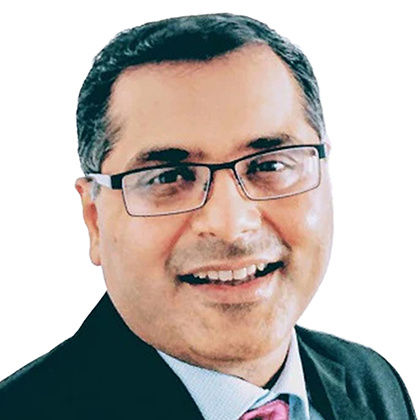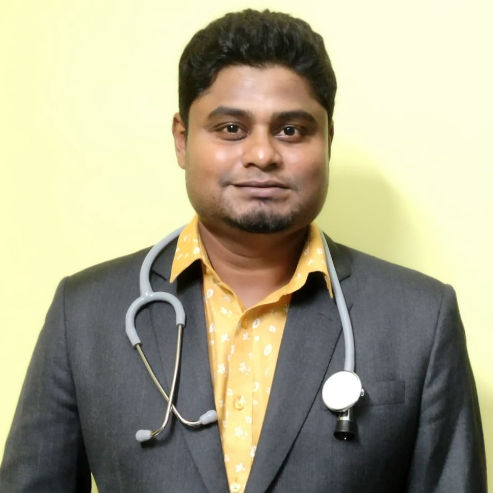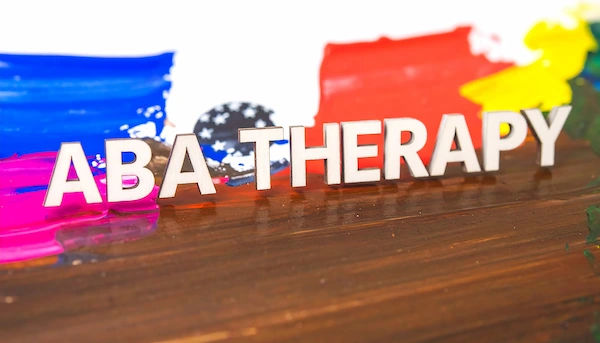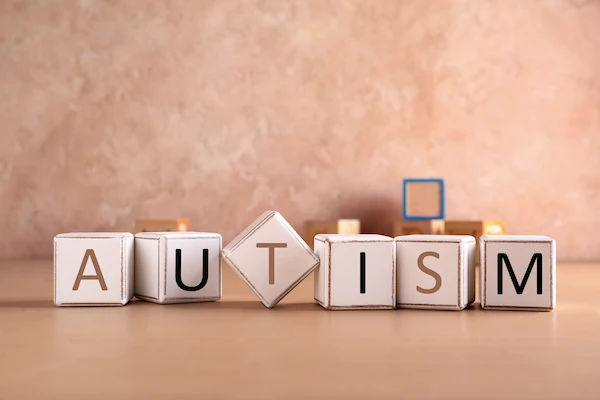Guide to Autism Spectrum Disorder
Explore a comprehensive guide to Autism Spectrum Disorder (ASD), including early signs, symptoms across all ages, causes, diagnosis, therapies, and strategies for supporting individuals and families.


Introduction
Autism Spectrum Disorder (ASD) is a complex neurodevelopmental condition that affects how a person communicates, interacts with others, and experiences the world. Often diagnosed in early childhood, its impact lasts a lifetime. But what does it really mean to be "on the spectrum"?
This guide demystifies ASD, moving beyond labels to explore the signs, causes, and pathways to support. Whether you
are a concerned parent, an educator, or someone seeking to understand your own experiences, this article provides a clear, compassionate, and evidence-based overview. It examines the core characteristics of autism, the diagnostic process, and highlights strategies and therapies that can help individuals with ASD thrive. Knowledge can replace uncertainty with clarity and foster a deeper understanding of this unique and varied condition.
What Exactly is Autism Spectrum Disorder (ASD)?
Autism Spectrum Disorder is not an illness or a disease; it is a different way of thinking and processing information. It can be defined as a developmental disability caused by differences in the brain. People with ASD often have challenges with social communication and interaction, and they may exhibit restricted or repetitive behaviours or interests. These
characteristics manifest uniquely in every individual.
The term "spectrum" emphasises the wide variation in challenges and strengths possessed by each person with autism. Some individuals may require significant support in daily life, while others may live independently and have exceptional abilities in specific areas such as mathematics, art, or memory.
Beyond a Single Definition: The Spectrum Concept
Think of the autism spectrum not as a linear scale from "low functioning" to "high functioning," but as a colour wheel or a complex sound mixing board. Each person has a unique profile across different areas. One individual might have significant language delays but minimal sensory issues, while another might be highly verbal but struggle with social cues and changes in routine. This nuanced view helps appreciate each person with ASD as an individual and avoids harmful generalisations.
From DSM-IV to DSM-5: The Evolution of Diagnosis
The diagnostic criteria for autism have evolved significantly. The DSM-IV (Diagnostic and Statistical Manual of Mental Disorders, Fourth Edition) previously categorised Autistic Disorder, Asperger's Syndrome, and Pervasive Developmental Disorder-Not Otherwise Specified (PDD-NOS) separately. In 2013, the DSM-5 consolidated these under the single diagnosis of Autism Spectrum Disorder. Now, a diagnosis specifies severity levels across two core domains: social communication and restricted, repetitive behaviours.
Consult Top Doctors for Personalised Advice
Recognising the Signs: Core Symptoms of Autism
The signs of Autism Spectrum Disorder can be grouped into two categories. Having a few traits does not automatically
indicate autism. A formal diagnosis requires persistent symptoms that impair everyday functioning and were present in
early development.
1. Social Communication and Interaction Challenges
This area involves difficulties with social engagement. Symptoms may include:
- Differences in nonverbal communication, such as avoiding eye contact, limited facial expressions, or not using gestures
like pointing or waving. - Challenges in developing and maintaining relationships, including difficulty making friends and understanding social
rules. - Difficulties with social-emotional reciprocity, such as not responding to their name, not sharing interests, or struggling
to initiate interactions.
2. Restricted, Repetitive Patterns of Behaviour, Interests, or Activities (RRBs)
This category includes behaviours that provide comfort or stimulation:
- Stereotyped or repetitive movements, also known as "stimming," such as hand-flapping, rocking, spinning, or echolalia.
- Insistence on sameness, including distress over small changes, difficulties with transitions, or following rigid routines.
- Highly restricted, fixated interests with abnormal intensity or focus.
- Sensory sensitivities, including unusual reactions to sounds, textures, temperature, or visual stimuli.
Autism Signs Across Different Ages
Autism can present differently at various stages of life, and recognising age-specific signs is crucial for timely support
and intervention.
1. Early Red Flags in Babies and Toddlers
Early signs can often be spotted before the first birthday:
- By 6 months: Few or no big smiles or warm expressions.
- By 9 months: Little or no sharing of sounds, smiles, or other facial expressions.
- By 12 months: Lack of response to name, little babbling, absence of gestures like pointing or reaching.
- By 16 months: Very few or no words.
- By 24 months: Very few or no meaningful two-word phrases.
2. Common Signs in School-Age Children
As social demands increase, challenges become more apparent. Children may struggle to make friends, prefer solitary
play, have intense tantrums when routines change, take language very literally, or show exceptional knowledge in a
niche area while lagging in others.
3. Identifying Autism in Teens and Adults
Adults with high-functioning autism may not be diagnosed until later. Signs include difficulty interpreting social cues,
maintaining friendships, anxiety in social situations, a strong preference for routine, and longstanding sensory sensitivities. Many may have learned to "mask" their symptoms, which can be mentally exhausting.
What Causes Autism? Unpacking the Research
There is no single cause. ASD arises from a combination of genetic and environmental factors.
1. The Strong Genetic Link
ASD often runs in families. Certain genetic mutations and conditions like Fragile X syndrome increase risk. No single
"autism gene" exists; hundreds of genetic variations may contribute.
2. Environmental Risk Factors
Advanced parental age, pregnancy and birth complications, and closely spaced pregnancies may increase risk, but these
are not direct causes.
3. Debunking Common Myths: Vaccines and Other Misinformation
High-quality research shows no link between vaccines and autism. Vaccines remain essential for preventing serious
illnesses. Concerns about development should be discussed with a healthcare professional.
The Path to Diagnosis: How ASD is Identified
1. Developmental Screening: The Crucial First Step
Diagnosis is a two-stage process. During routine well-child visits, paediatricians conduct brief developmental screenings,
often at 18 and 24 months. If concerns arise, a comprehensive evaluation follows. Early discussion with a paediatrician
is critical, and an initial online assessment with Apollo24|7 can help guide next steps.
2. Comprehensive Diagnostic Evaluation
A team of specialists, such as developmental paediatricians, psychologists, or neurologists, conducts in-depth
assessments. These include reviewing behaviour and development, caregiver interviews, and sometimes hearing and
vision tests to rule out other conditions.
Support, Therapies, and Management Strategies
While there is no cure, early and targeted intervention can significantly improve skills and outcomes.
1. Early Intervention Programs: Why Timing Matters
The brain is most adaptable in early years. Programs from birth to age 3 support communication, social, and cognitive
development.
2. Key Behavioural Therapies
Behavioural therapies play a central role in helping individuals with autism develop essential skills and manage daily
challenges effectively.
- Applied Behaviour Analysis (ABA): Uses reinforcement techniques to teach new skills and reduce harmful behaviours.
- Speech-Language Therapy: Improves verbal and nonverbal communication.
- Occupational Therapy (OT): Supports sensory integration and daily living skills.
- Social Skills Training: Teaches unwritten rules of social interaction.
3. Educational and School-Based Support
Children with ASD may qualify for an Individualised Education Programme (IEP), outlining goals and support
services, such as classroom aides or specialised instruction.
Co-occurring Conditions: What Often Accompanies ASD
Common co-occurring conditions include anxiety, depression, ADHD, sleep disorders, gastrointestinal issues, and
epilepsy. Managing these conditions is an essential part of overall care, and consulting a doctor online with Apollo24|7
can help.
Embracing Neurodiversity: Strengths and Abilities in Autism
Autism can come with remarkable strengths, such as:
- Intense focus on specific interests
- Attention to detail
- Deep honesty and loyalty
- Exceptional memory
Recognising these abilities helps build self-esteem and inform career choices.
A Guide for Families and Caregivers
Receiving a diagnosis can be overwhelming. Key steps include educating yourself, connecting with support groups, celebrating small victories, and maintaining your own mental health. Families play a central role in advocacy and
support networks.
Conclusion: A Journey of Understanding and Support
Understanding Autism Spectrum Disorder is the first step toward creating a more inclusive and supportive environment.
From recognising early signs to navigating diagnosis and therapies, knowledge empowers families and individuals. This
journey is not about "fixing" someone but about understanding needs, celebrating strengths, and providing tools to
thrive. If you suspect a child or adult may be on the spectrum, seek guidance from a qualified healthcare professional.
With appropriate support, individuals with ASD can lead fulfilling and meaningful lives. Booking a consultation with a specialist through Apollo24|7 offers a convenient way to start this process.
Consult Top Paediatric Psychiatrists
Consult Top Paediatric Psychiatrists

Dr. Asst. Prof. Ishani Roy Chatterjee
Psychiatrist
10 Years • MBBS, MD (Psychiatry),DNB
Kolkata
Dr Ishani's Clinic, Kolkata

Dr. Aditya Nair
Psychiatrist
5 Years • MBBS, MD (Psychiatry)
Bansdroni
Siddhita Healthcare., Bansdroni

Dr. Naga Bandikatla Nandini
Pediatric Psychiatry
11 Years • MBBS, MRCP, Psych, MBA
Hyderabad
Apollo Hospitals Jubilee Hills, Hyderabad

Dr. Jinesh Shah
Psychiatrist
20 Years • MBBS, MRCPsych (UK), CCT in Adult Psychiatry (UK), CCT in Child and Adolescent Psychiatry (UK), PG Diploma in Clinical Psychiatry (UK), Cert Hypnotherapy (UK).
Ahmedabad
Apollo Speciality hospital, Ahmedabad, Ahmedabad
(125+ Patients)

Dr. Anindya Mondal
Psychiatrist
4 Years • MBBS, MD Psychiatry
Barasat
Diab-Eat-Ease, Barasat
Consult Top Doctors for Personalised Advice

Dr. Asst. Prof. Ishani Roy Chatterjee
Psychiatrist
10 Years • MBBS, MD (Psychiatry),DNB
Kolkata
Dr Ishani's Clinic, Kolkata

Dr. Aditya Nair
Psychiatrist
5 Years • MBBS, MD (Psychiatry)
Bansdroni
Siddhita Healthcare., Bansdroni

Dr. Naga Bandikatla Nandini
Pediatric Psychiatry
11 Years • MBBS, MRCP, Psych, MBA
Hyderabad
Apollo Hospitals Jubilee Hills, Hyderabad

Dr. Jinesh Shah
Psychiatrist
20 Years • MBBS, MRCPsych (UK), CCT in Adult Psychiatry (UK), CCT in Child and Adolescent Psychiatry (UK), PG Diploma in Clinical Psychiatry (UK), Cert Hypnotherapy (UK).
Ahmedabad
Apollo Speciality hospital, Ahmedabad, Ahmedabad
(125+ Patients)

Dr. Anindya Mondal
Psychiatrist
4 Years • MBBS, MD Psychiatry
Barasat
Diab-Eat-Ease, Barasat
More articles from Autism
Frequently Asked Questions
Q1. What is the difference between autism and Asperger's syndrome?
Asperger's was previously a separate diagnosis for individuals with autistic traits but without significant language delays. Since the DSM-5, it is included under Autism Spectrum Disorder. Many previously diagnosed with Asperger's now identify as being on the autism spectrum.
Q2. Can autism be cured?
No, there is no cure. Autism is a lifelong neurodevelopmental condition. With therapies, support, and accommodations, individuals can manage challenges and lead successful, independent lives.
Q3. How is autism spectrum disorder diagnosed in adults?
Adult diagnosis involves detailed interviews about childhood development, current social and work challenges, and an assessment of repetitive behaviours and sensory sensitivities by a psychologist or psychiatrist experienced with ASD.
Q4. Are there specific signs of autism in girls?
Girls often display subtler signs and may mask difficulties by imitating peers. Restricted interests might align more with typical female interests, making symptoms less conspicuous.
Q5. What should I do if I think my toddler has autism?
Speak to your child's paediatrician, sharing specific observations. They may perform a developmental screening and refer to a specialist for a full autism evaluation.


